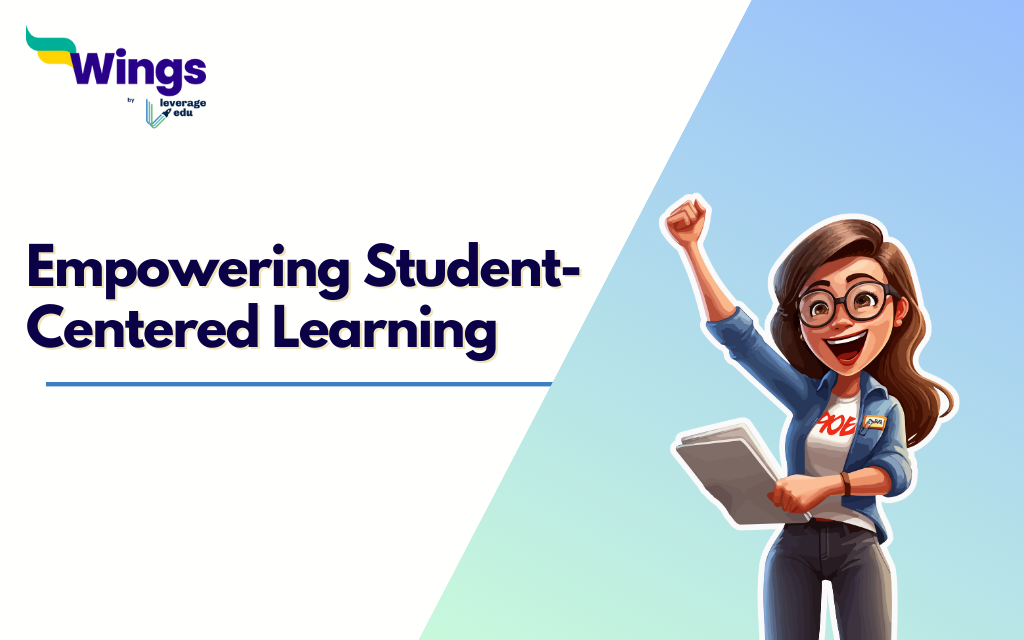Imagine a scenario where you are being forced to learn something that you are not interested in or to adapt to a situation where you would hate to see yourself. What immediately comes to your mind? Why would anyone do that? This is how exactly a child feels when they are forced consistently to do something. Unfortunately, we squeeze as much information into children’s heads as possible. But the reality is that children imbibe a lot of what they learn if they enjoy learning. Keeping this approach in mind, student-centred learning brings fun even to boring topics. Continue reading to know more about what student learning is all about.
Contents
Learn about the Top 6 Effective Classroom Teaching Methods
What is Student Centered Learning Approach?
An educational strategy known as “student centred learning” places an emphasis on each student’s unique needs and interests. Maintaining student autonomy and providing them with a voice throughout the learning process are the main objectives of this method. With this method, the teacher’s job changes from that of a simple lecturer to that of a facilitator who aids students in understanding the material in a more interesting way.
Understand the Learning Outcomes in Teaching: Types, Benefits and Characteristics
Benefits of Student Centered Learning Approach
It is critical to realise that education ought to be enjoyable and interesting for kids. Students shouldn’t be forced to learn using rigorous learning methods or an abundance of information resources; otherwise, they will begin to demonstrate a lack of enthusiasm in learning and procrastination may increase due to their lack of interest in mastering the subject. Students who procrastinate are typically labeled as weak students and the consequences are frequently recognized later. As a result, student-centered learning takes all of these things into account and fosters an environment where learning can take place.
Let’s take a look at some of the benefits of the student centered learning approach:
- By allowing students to contribute their own ideas and become more active in the learning process, the student-centered learning approach improves memorization.
- Students’ involvement increases when they participate. as it reflects the very start of a successful learning process. Students’ interests are sparked and their engagement or participation in class activities is increased when they are given access to or offered more engaging and diversified study material.
- Student-centered learning fosters the development of problem-solving abilities. Students comprehend real-world challenges better when they are given the chance to learn in real-life situations. In addition to preparing children for life beyond school, it also helps them get ready for any challenges that may arise in the future.
- The student-centered learning approach’s greatest feature is that it promotes cooperation and teamwork. When kids of similar ages are around them, they learn and grow better. With so many group projects and assignments, this method gives learners the chance to work with students of all ages.
Also Read: Top 6 Assessment Tools for Teachers
Tips to Set-up Student Centered Learning Environment
Now that you are aware of the advantages and features of the student-centered learning approach, let’s discuss how to create a learning environment where every student has the chance to thrive. Check out the pro tips below:
- Making Student Responsible: One of the most important steps in creating a student-centered learning environment is giving students situations where they can take on substantial responsibility. Students who have a sense of responsibility feel heard and held accountable for their work in a positive learning environment. They also get a sense of independence from it. Students who receive clear instructions and expectations know exactly what is expected of them and how to begin exploring various options for completing activities. When a student-centered learning environment is established in the classroom, it also helps learners become self-directed.
- Grouping students in a flexible way: Remember that the flexible nature of the student-centered learning method allows for the possibility of asking students to collaborate in a variety of ways. Different tasks and activities call for different skill sets, thus in order to complete things more effectively and successfully, students need to be divided in a flexible way based on the project or activity that is being worked on.
- Smart Implementation of Technology: Technology, when integrated with a curriculum in a correct manner, has many benefits for students. Students can share information with peers, work collaboratively on assignments and projects, and instantly access a wide pool of information in smart classrooms. Students benefit from having better access to a variety of interesting study resources as well as improved information retention.
- Make a Goal of Building Community, not just a Classroom: Teachers should constantly work to foster an environment in which learning is encouraged rather than coerced. After all, the purpose of education is to develop future leaders, not a herd of students. Establishing a supportive atmosphere where students feel free to make mistakes so they can learn from them must be the objective. The ideal approach to promote a student-centered learning environment is to help them learn from their mistakes rather than criticise their actions. Little things like calmly listening to students and being aware of their needs can make a big difference in the learning environment.
Explore more
FAQs
One of the most popular teaching methods that focus on students’ needs and interests is called student-centered learning.
Collaborative learning is an approach that explains student-centred learning at its best.
Student-centred learning makes the entire learning process engaging, supports individual needs and students learn at their own pace.
Follow Leverage Edu for more interesting and informative blogs on school education.
 One app for all your study abroad needs
One app for all your study abroad needs














